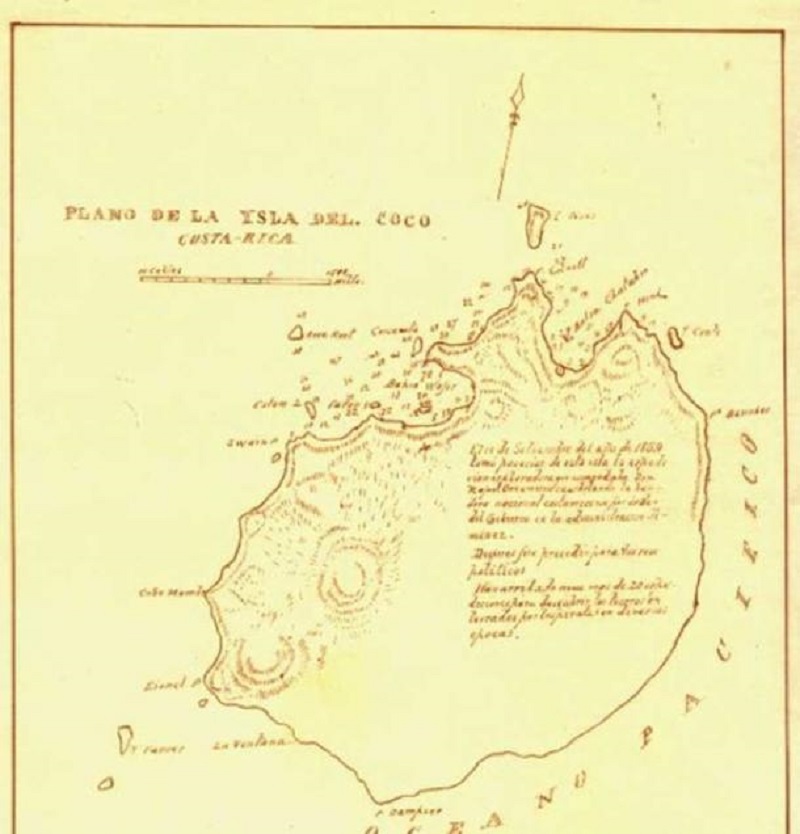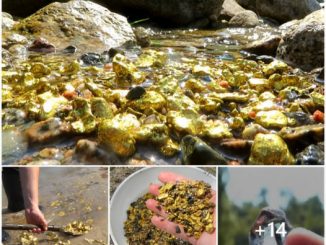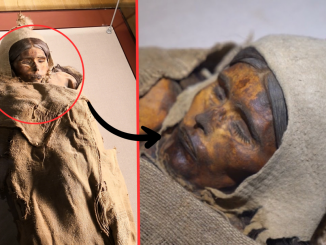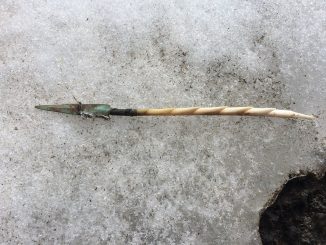Where will you go, dear Mary?
In any case, the treasure was loaded into the cargo hold of the “Mary Dear” and to make sure everything was in order, the Spanish placed a number of priests and armed soldiers on board to guard. Immediately after that, the ship departed to the open sea with an offshore journey mission. But greed proved too great for Captain Thompson to handle.
Seduced by the huge fortune secured in their hands, the captain and crew of the “Mary Dear” decided to mutiny. During the night, they took their opportunity and murdered Spanish soldiers and priests – most of whom were sleeping – and dumped their bodies in the water.
They then quickly changed course and headed for Cocos Island – a popular stop for whalers and traders alike due to its many anchorages and freshwater springs. This jungle island is located about 550 km (342 miles or 297 nautical miles) off the coast of Costa Rica. While on the island, the crew buried their precious cargo.
Cocos Island, Costa Rica . (Michael Bogner/Adobe Stock)
When they set off again, they were stopped at sea by a Spanish navy destroyer. A clash ensued and the “Mary Dear” – which was a merchant ship – was quickly overwhelmed and the entire crew captured. Charged with piracy, mutiny, theft, etc., the crew was executed by hanging. All except two men – Captain of the “Mary Dear,” William Thompson, and his first mate – James Alexander Forbes. They were allowed to live to lead the Spaniards to the place where the treasure was buried.
Soon after, they returned to Cocos Island, but the two captives, fearing death even if they cooperated, managed to flee their captors and enter the dense tropical jungle of Cocos Island. For three weeks, the Spanish crew tried without success to locate them or the gold. Thompson and Forbes knew the island too well and were tough sailors who could survive off the mainland. The Spanish never found them and eventually had to sail back to the mainland.
Therefore, two merchants and pirates were stranded on a deserted island. But they were not worried, because they knew that one day a ship would anchor there. And it did. They were rescued several months later by a passing English whaler, managing to survive on Cocos Island alone by feeding themselves on fish, birds, eggs, and coconuts.
But the treasure they buried is still somewhere on the land of this island. Fearing the greed of other sailors, they could not risk taking any part of it with them. Over the following months and years, Thompson and Forbes created detailed documents and maps regarding the location of the buried treasure. This is done to remember the location without risk. William Thompson died soon after, leaving James A. Forbes as the last remaining person who knew the exact location of the legendary and buried Treasure in Lima.
Map of Cocos Island by Jose Maria Figueroa in 1883. (DreamCoin)
The Secret Keeper – James Alexander Forbes I
James Alexander Forbes I was born in 1804 in Inverness, Scotland. Bearing the surname of a famous Scottish Highlander, his adventurous spirit took him to South America at the age of 12. He was Mary Dear’s first mate at just 17 – a testament to his natural intelligence. Your good and talented.
After the buried treasure and Thompson’s death, Forbes spent the following years sailing throughout the Pacific, participating in several maritime postings. His path eventually took him to California and San Francisco, where he quickly became a wealthy and influential man.
He worked as an accountant in Richmond, at the San Pablo ranch of wealthy landowner Francisco Maria Castro. He then went to the Santa Clara area, where he became a promising businessman. In 1834, he married Anna Maria Galindo, daughter of Jose Crisostino Galindo, a major of the Santa Clara de Asis Mission. At that time he was already a wealthy businessman.
After marrying into this wealthy Mexican family, he funded the founding of Santa Clara University. He then joined as a partner in Almaden Quicksilver Mines, eventually winning full title to the mine. He also purchased 2,000 acres of land from the El Rancho Rinconada de Los Gatos land trust, with the intention of building a prosperous mill at Los Gatos creek – a decision prompted by a growing flour shortage.
Forbes Mill, Los Gatos, California, circa 1900. (Public domain)
All of James’ Forbes’ lucrative endeavors and smart decisions made his family one of the wealthiest in the area. In his later years, he kept documents and maps of Cocos Island in a safe and talked to his children about buried treasure. Knowing little about their father’s history, the children considered the stories “fairy tales.”
However, before his death in 1881, James Alexander Forbes I transferred the map and documents to his eldest son and heir Charles Forbes. Being wealthy and influential, his heir did not want to go treasure hunting, and thus the documents were simply passed down from generation to generation within the Forbes family.
No one made any attempt to find the legendary treasure until 1939, when James Forbes the Fourth – a man with an adventurous spirit – decided to sail to Cocos Island. At that time, the Forbes family was no longer rich or influential (but not poor either).
James the Fourth led a team to Cocos Island and quickly discovered some traces that told him a real treasure might be buried there. But before making any important discoveries, the group is forced to leave and postpone the excavation due to shadowy armed men observing them from boats offshore.
James Forbes the 4th died without returning to the island and passed the documents to his nephew, William B. Forbes.
The Mysteries of Greed – Are Secrets Shared?
Like most stories of buried treasure, there exist many versions and many other legends surrounding the original story. Some sources say that before his death, Captain William Thompson shared this information with a sailor named John Keating. The latter is said to have recovered part of the Lima treasure. The person who knew this secret was his quartermaster, a man named Nicholas Fitzgerald.
A unique document kept at the Caracas museum is the supposed inventory of the buried treasure that Keating and Fitzgerald buried on the island of Coiba off the coast of Panama. The letter lists the artifacts and is a clear insight into the vast wealth of the Lima Treasure:
“We buried four feet deep in the red soil: 1 chest; Altar decorations made of gold cloth, miter, monstrance, chalice, including 1,244 stones. 1 chest; 2 gold relics weighing 120 pounds, with 624 topaz, cornel and emerald stones, 12 diamonds. 1 chest; 3 cast metal relics weighing 160 pounds, with 860 rubies and various stones, 19 diamonds. 1 chest; 4,000 Spanish coins marked 8; and 5,000 Mexican crowns. 124 swords, 64 daggers, 120 shoulder belts. 28 rodachs. 1 chest; 8 cedar and silver coffins, with 3,840 cut stones, rings, patents and 4,265 uncut stones. 28 feet northeast, at a depth of 8 feet in golden sands; 7 chests: with 22 gold and silver candlesticks weighing 250 pounds and 164 rubies per foot. 12 arm’s length to the west, at a depth of 10 feet in the red earth; The 7-foot-tall golden Virgin, with the Christ Child, crown and corset weighing 780 pounds, rolled in a golden vestment with 1,684 jewels. Three of them are 4-inch emeralds on the chest and 6 are 6-inch topaz on the crown. Seven crosses made of diamonds 124 swords, 64 dirks, 120 shoulder straps. 28 rodachs. 1 chest; 8 cedar and silver coffins, with 3,840 cut stones, rings, patents and 4,265 uncut diamonds…”
Most of the treasures listed are confirmed to belong to the Cathedral in Lima, especially the legendary life-sized statue of the Virgin Mary cast from solid gold. But whether the story of William Thompson sharing his secret with John Keating is true or not, we may never know. It is possible that James Alexander Forbes lived without knowing this, believing that the treasure remained on Cocos Island when it was not there. But the truth remains buried and hidden – just like the Treasure of Lima.
The island keeps a secret
Cocos Island became the focus of many stories about buried treasure. From the infamous pirates Benito Bonito, Bennett Graham, Captain John Cook and Captain Kidd – all are said to have buried their treasure at Cocos Island. Mary Welsh, a female pirate from Bennett Graham’s crew, was sentenced to exile to an Australian penal colony for her piracy. She claims that there are 350 tons of Spanish gold buried on Cocos Island.
There’s definitely something lurking in the sands of this tropical island. With entry into it forbidden, its secrets remain well-kept. But even so, its ancient rocks are covered with puzzling carvings from the 17th, 18th and 19th centuries, left there as signs by pirates and prospectors. treasure. It’s also filled with remote caves, tunnels, creeks and dense jungle foliage – it’s the perfect deserted island to bury treasure. But exactly what lies deep within it remains a mystery.





